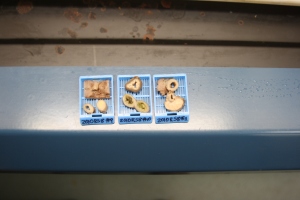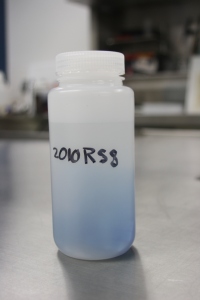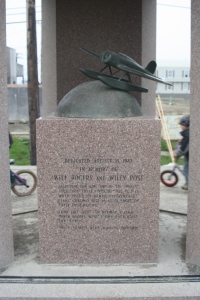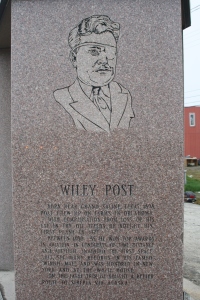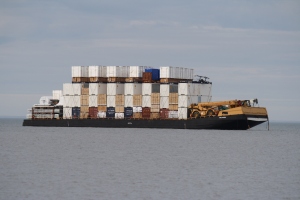Friday Nights at the “Top of the World”…
As I prepare to return “home” to Barrow, I find myself reminiscing about days gone by on the North Slope. I was priviliged to spend a Friday evening in August 2010 with longtime bowhead whale biologist Craig George, his wife, Cyd Hanns and their oldest son, Luke. A friend and veterinary colleague, Nina Hansen was visiting me from Fairbanks. Nina and I first met in 2007, when I was doing summer pathology work for the Alaska Department of Fish and Game. Nina graduated from the University of Illinois College of Veterinary Medicine in May 2007. Upon graduation, she packed her things, got in her car and made the long road trip to Fairbanks, Alaska to take a job with McKinley Animal Hospital. Today she is a full-time PHD student at UAF and still practicing at McKinley Animal Hospital.
We spent the evening cruising in Craig’s boat looking for seals, walruses and whales. 
We also encountered the incoming barges delivering goods to Barrow….
We discovered a gray whale carcass on the beach south of Barrow, in the area commonly referred to as “Hollywood” because of the past movies and films shot in this area. It was apparent this whale had been there for quite sometime! There were no tissues available to collect for investigation and study. We still pulled the boat onto shore and investigated the remains.
A wind advisory was issued, cutting our evening short. As we cruised back to Barrow, I was able to appreciate an ocean view of one of the oldest and most famous landmarks in Barrow, the Brower Whaling Station. Whalers, traders, missionaries and Arctic exploration greats-Stefansson, Captain Bob Bartlett, Wilkins, Rasmussen and Amundsen had all frequented the home and business of Charles D. Brower, the “King of the Arctic”. 






